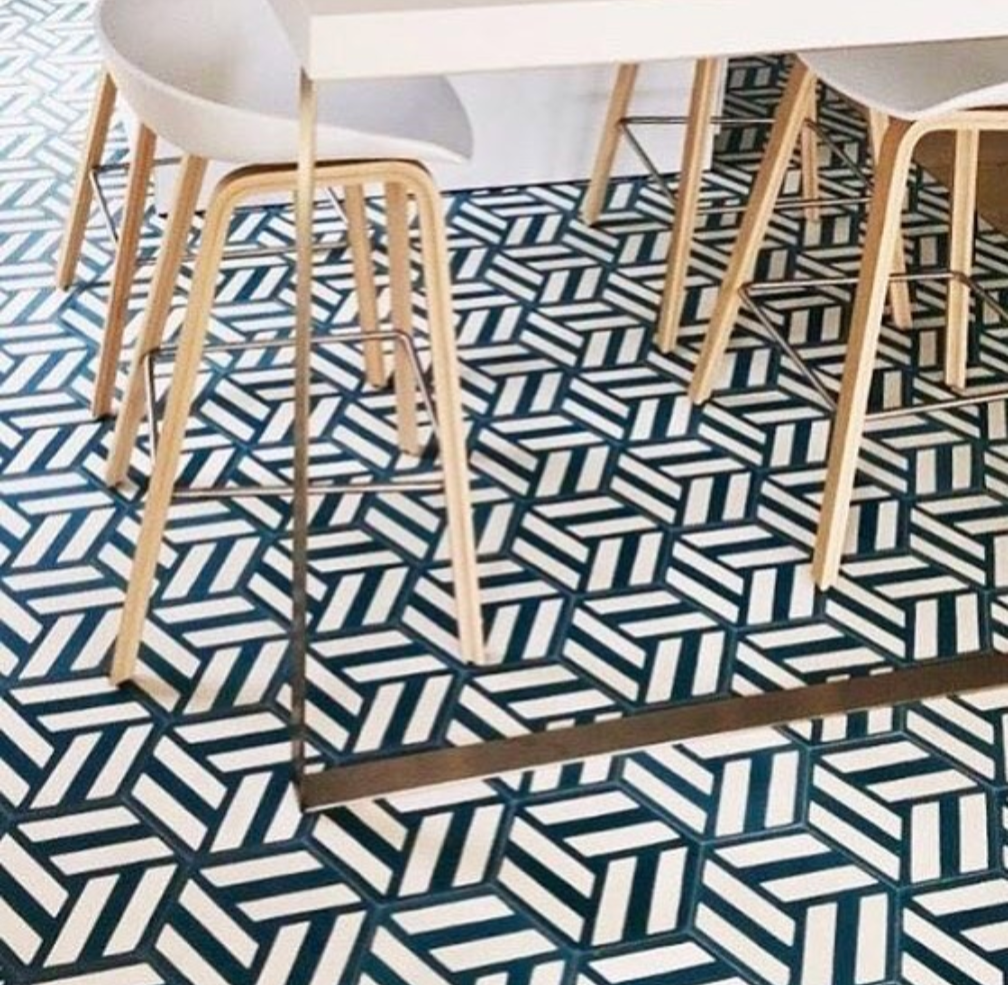Cement tiles have a rich history and a timeless appeal that has made them a staple in both modern and traditional design. These beautifully crafted tiles offer a unique blend of artistry, durability, and versatility that can enhance any space. Let's take a journey through the history of cement tiles, explore their diverse design applications, and understand their practical benefits.
History
Cement tiles originated in Europe in the 19th century, becoming particularly popular in countries like Spain and France. The production process involves hand-pouring pigmented cement into molds, creating intricate patterns and vibrant colors. This method allowed for mass production while maintaining the artisanal quality of each tile. By the late 1800s, cement tiles were being used extensively in homes, public buildings, and palaces across Europe and the Americas.
The early 20th century saw the decline of cement tile popularity with the advent of modern industrial materials like ceramic and porcelain. However, in recent decades, there has been a global resurgence of interest in these tiles. Designers and homeowners alike have rediscovered the charm and practicality of cement tiles, leading to a revival in their production and use.
Design Versatility
One of the most appealing aspects of cement tiles is their design versatility. They can be used to create a wide range of styles, from traditional to contemporary.
-
Mediterranean: Cement tiles are often associated with Mediterranean design, characterized by vibrant colors and intricate patterns. These tiles can be used to create stunning floors, backsplashes, and accent walls that evoke the warmth and beauty of Mediterranean architecture.
-
Victorian: In Victorian design, cement tiles are used to create elegant and detailed patterns, often in more subdued color palettes. These tiles can add a touch of historic charm to any space, making them perfect for restoration projects or adding character to newer homes.
-
Contemporary: For a modern aesthetic, cement tiles can be used in minimalist and geometric designs. Their bold patterns and clean lines can serve as a striking focal point in contemporary kitchens, bathrooms, and living areas.
Durability and Functionality
Beyond their aesthetic appeal, cement tiles are also known for their durability and functionality. Made from a mixture of cement, sand, and pigments, these tiles are incredibly robust and can withstand heavy foot traffic. This makes them an excellent choice for high-traffic areas such as hallways, kitchens, and commercial spaces.
Cement tiles are also resistant to moisture and stains, especially when properly sealed. This makes them suitable for use in bathrooms and kitchens where spills and humidity are common. Their ability to retain their color and pattern over time, even in the face of daily wear and tear, ensures that they remain a beautiful and practical choice for many years.
Conclusion
Cement tiles are not just a trend; they are a timeless addition to any space. Their rich history, design versatility, and practical benefits make them a valuable choice for both modern and traditional interiors. Whether you are looking to add a touch of historic charm or a bold contemporary statement, cement tiles offer a unique way to transform your space. Embrace the timeless appeal of cement tiles and let them bring enduring beauty and functionality to your home.


